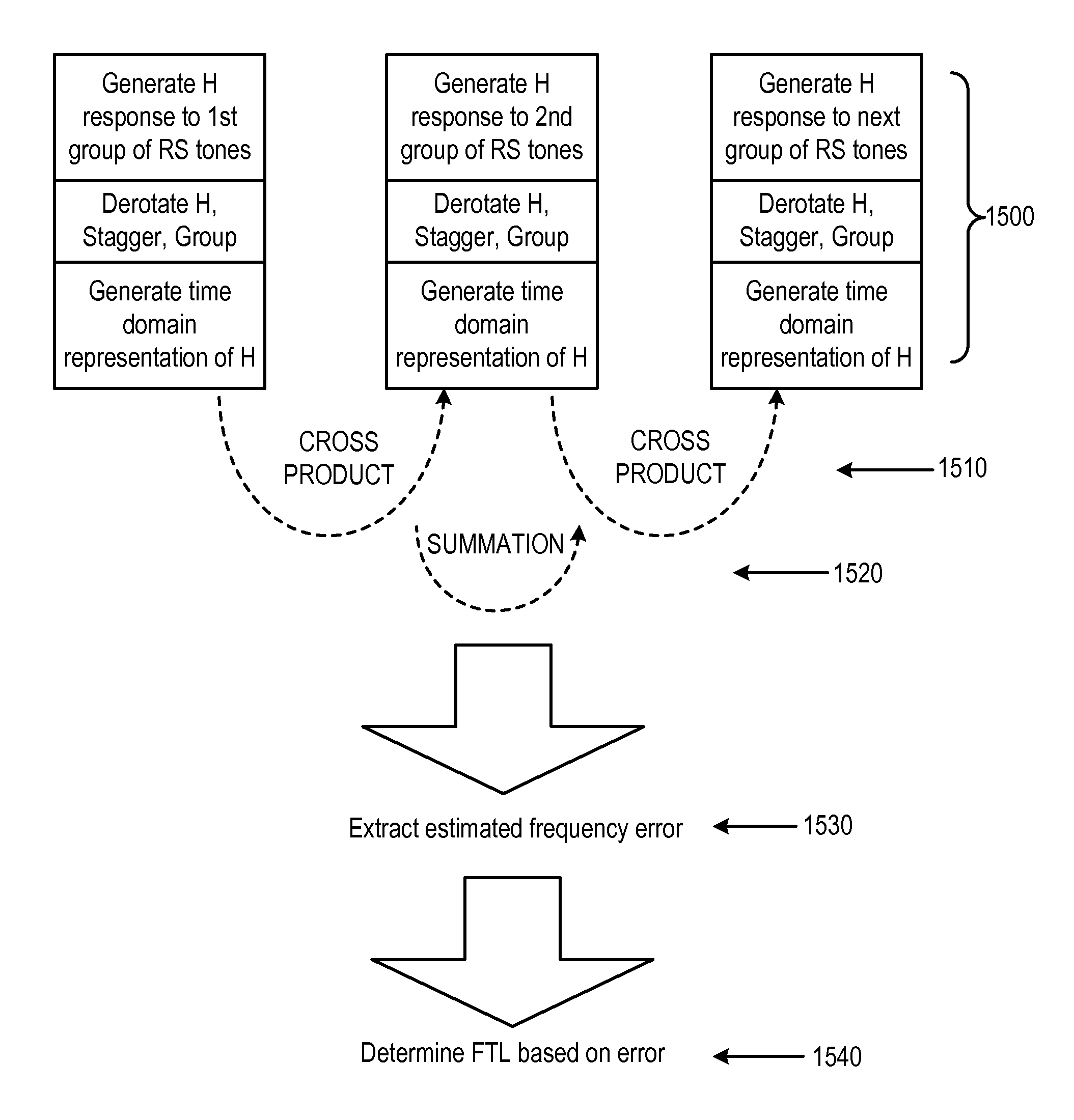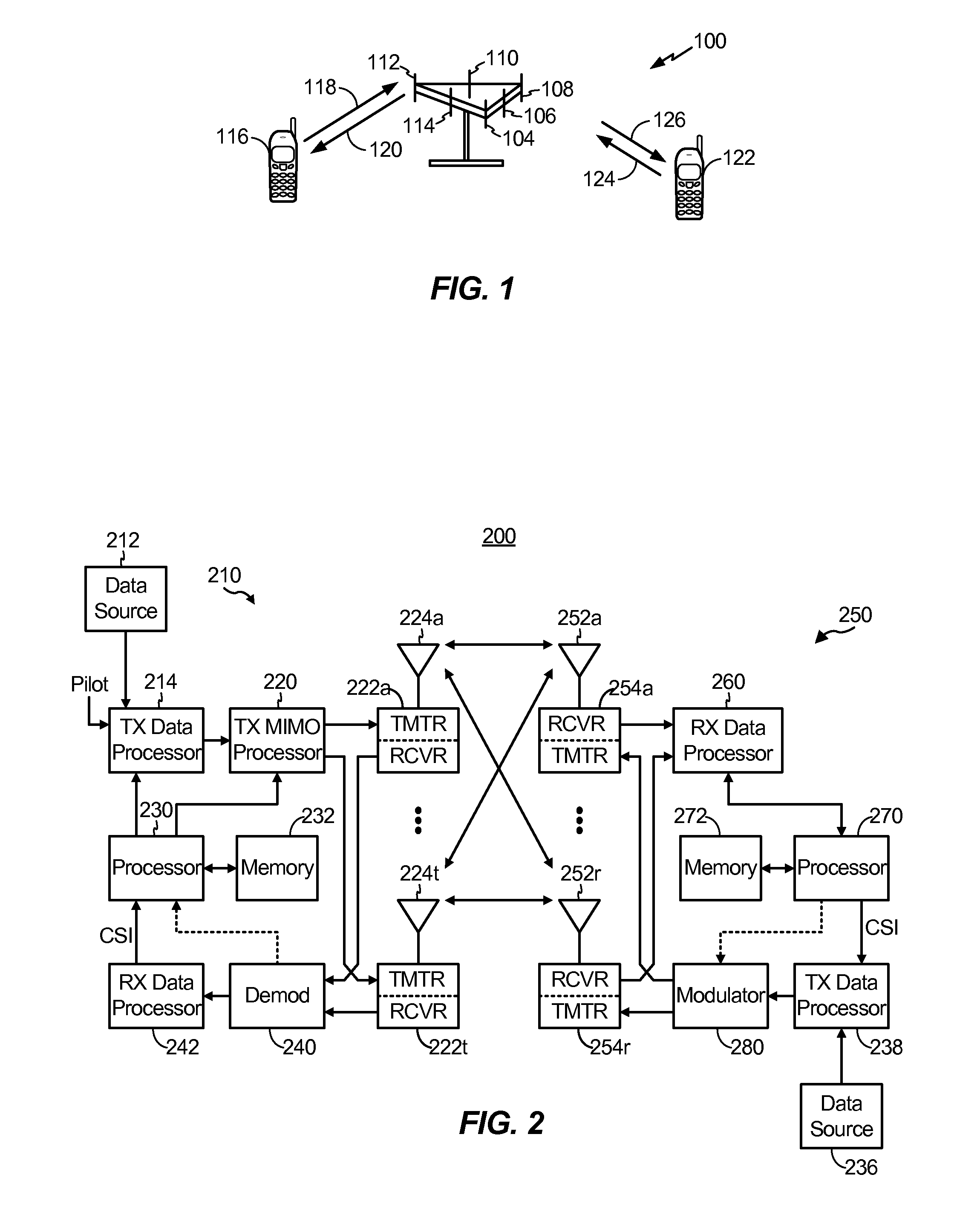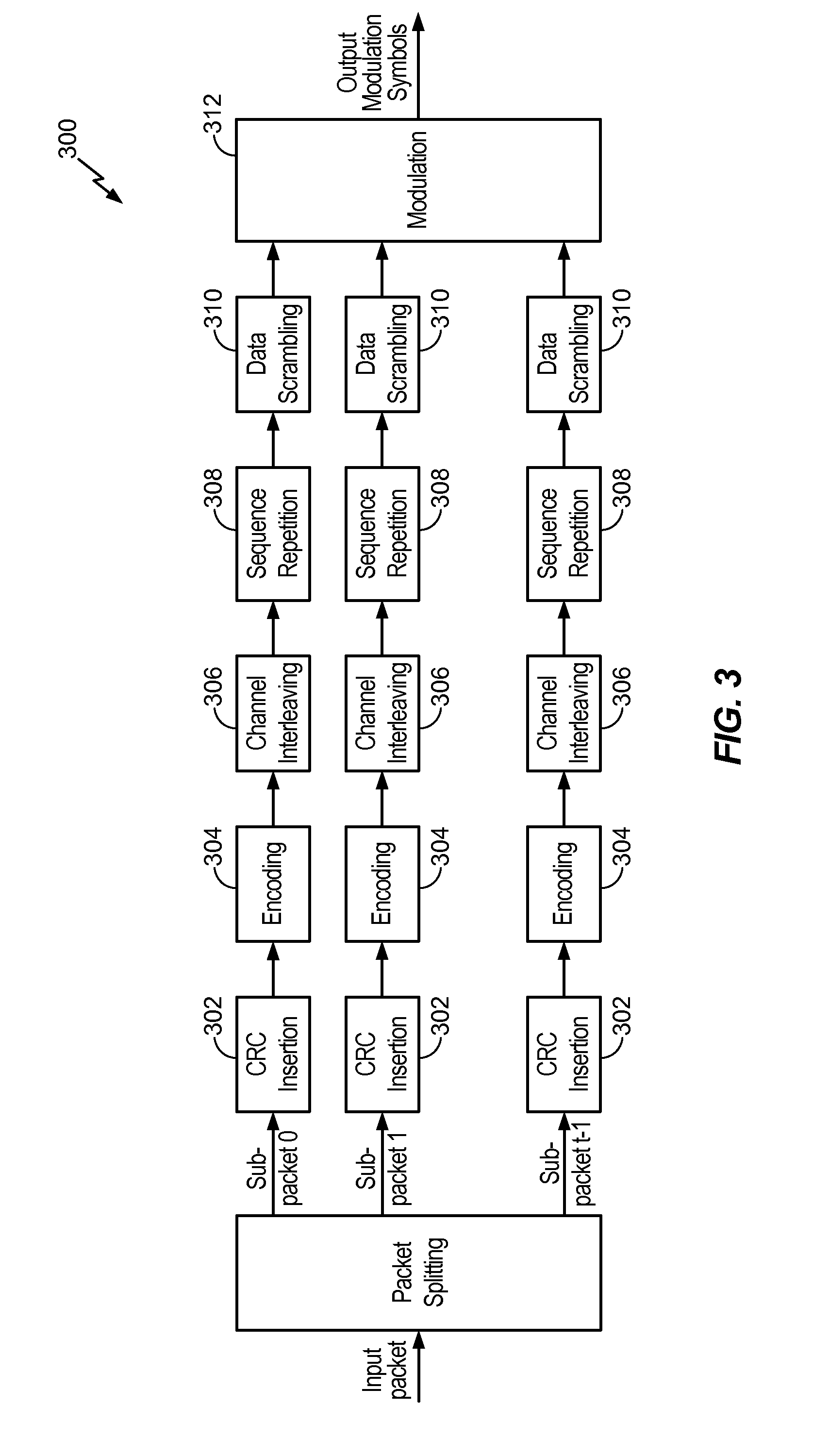Channel impulse response (CIR)-based and secondary synchronization channel (SSC)-based (frequency tracking loop (FTL)/time tracking loop (TTL)/channel estimation
a synchronization channel and impulse response technology, applied in the field of wireless communication systems, can solve the problems of similar performance and essentially the same overall complexity, frequency errors on the ue side, and frequency clocks in the ue may not be as accurate as the transmitting ap's, so as to achieve enhanced frequency tracking and enhanced frequency tracking
- Summary
- Abstract
- Description
- Claims
- Application Information
AI Technical Summary
Benefits of technology
Problems solved by technology
Method used
Image
Examples
Embodiment Construction
[0029]For the purposes of the present document, the following abbreviations apply, unless otherwise noted:
[0030]AM Acknowledged Mode
[0031]AMD Acknowledged Mode Data
[0032]ARQ Automatic Repeat Request
[0033]BCCH Broadcast Control CHannel
[0034]BCH Broadcast CHannel
[0035]C- Control-
[0036]CCCH Common Control CHannel
[0037]CCH Control CHannel
[0038]CCTrCH Coded Composite Transport Channel
[0039]CP Cyclic Prefix
[0040]CRC Cyclic Redundancy Check
[0041]CTCH Common Traffic CHannel
[0042]DCCH Dedicated Control CHannel
[0043]DCH Dedicated CHannel
[0044]DL DownLink
[0045]DSCH Downlink Shared CHannel
[0046]DTCH Dedicated Traffic CHannel
[0047]ECI Extended Channel Information
[0048]FACH Forward link Access CHannel
[0049]FDD Frequency Division Duplex
[0050]L1 Layer 1 (physical layer)
[0051]L2 Layer 2 (data link layer)
[0052]L3 Layer 3 (network layer)
[0053]LI Length Indicator
[0054]LSB Least Significant Bit
[0055]MAC Medium Access Control
[0056]MBMS Multimedia Broadcast Multicast Service
[0057]MCCH MBMS point-to-multip...
PUM
 Login to View More
Login to View More Abstract
Description
Claims
Application Information
 Login to View More
Login to View More - R&D
- Intellectual Property
- Life Sciences
- Materials
- Tech Scout
- Unparalleled Data Quality
- Higher Quality Content
- 60% Fewer Hallucinations
Browse by: Latest US Patents, China's latest patents, Technical Efficacy Thesaurus, Application Domain, Technology Topic, Popular Technical Reports.
© 2025 PatSnap. All rights reserved.Legal|Privacy policy|Modern Slavery Act Transparency Statement|Sitemap|About US| Contact US: help@patsnap.com



